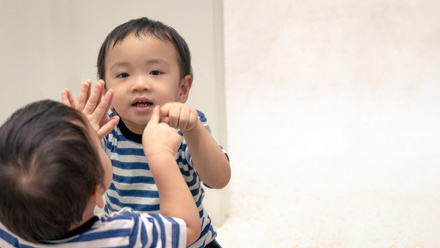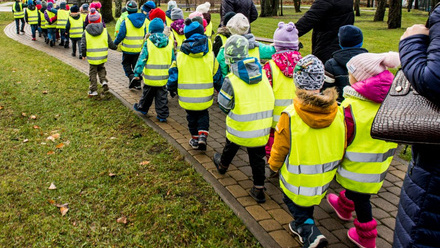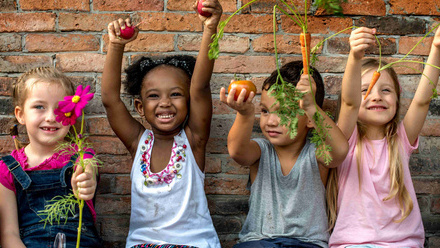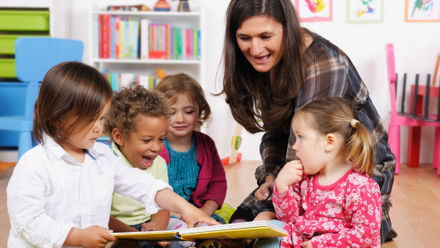Top tips: Supporting children with their communication and language
A well designed environment promotes social interaction, removes communication barriers and builds essential learning skills. Prioritising positive communication spaces ensures every child thrives, regardless of ability or background. Language and communication skills grow best with rich exposure to sounds, sights, speech and daily interactions with others. Explore our top tips and reflect on your daily practice.
Top tips for supporting children with their communication and language
- Tune in to babies’ communication through facial expressions, gestures, and sounds. Engage by mirroring their sounds, taking turns, and responding to their excitement
- Use clear body language, facial expressions, tone, and intonation. Demonstrate good communication habits like turn-taking and eye contact
- Ensure spaces reflect children’s unique interests, needs, languages, and heritage, making them feel valued and comfortable expressing themselves
- Provide well-lit areas for visibility and arrange spaces to support different types of interaction (e.g. small groups, one-on-one). Use cosy spaces for intimate conversations and book sharing
- Enhance language development with pictures, photographs, charts, and objects that reflect children's backgrounds and home lives
- Regularly offer stories, rhymes, songs, and poems. Talk to children during care routines and use greetings in their first language
- Provide engaging materials like natural objects, loose parts, and experiments to spark curiosity and collaboration. Plan activities that foster social skills, such as role play
- Share insights on language development, discuss communication progress, and provide activities for home support (e.g. lending books, sharing rhyme lyrics)
- Give children time to think and respond during conversations
- Regularly assess communication-friendly spaces and make adjustments as needed.
NDNA products to support you with this tip
Vocabulary and early language skills - Development Zone
Brilliant Babies
Disclaimer: Activities with children must always be risk assessed, including for allergies or choking. Children must always have adequate supervision. Resources and materials must always be appropriate for children’s age and stage of development.






